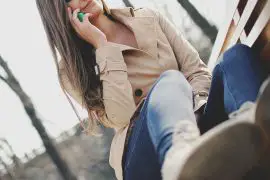Auckland and Wellington, two major cities in New Zealand, are often at the forefront of discussions when it comes to comparing urban destinations in the country. With their distinct characteristics and roles, Auckland and Wellington hold significant importance and enjoy widespread popularity among locals and tourists alike.
As the largest city in New Zealand, Auckland stands as a bustling urban hub, attracting people from all corners of the country and the world. Its vibrant energy, diverse population, and thriving industries make it a powerhouse of culture, commerce, and entertainment. Auckland’s iconic skyline, beautiful waterfront, and expansive cityscape contribute to its allure and make it a top choice for residents and visitors seeking a cosmopolitan experience.
On the other hand, Wellington proudly bears the title of New Zealand’s capital city. Nestled in a picturesque harbor setting, Wellington offers a more intimate and charming atmosphere. It serves as the administrative center of the country, housing government institutions, embassies, and key decision-making bodies. Wellington’s compact size, cultural heritage, and creative spirit have earned it the reputation of being the cultural capital of New Zealand.
Both Auckland and Wellington play crucial roles in shaping the identity and progress of New Zealand. They represent the diversity, dynamism, and innovation that define the country’s urban landscape. Whether it’s the vibrant streets of Auckland or the artistic vibe of Wellington, these cities offer a multitude of experiences, attractions, and opportunities for residents and visitors alike.
In the following sections, we will delve into various aspects of Auckland and Wellington, from their population and geography to their climates, cost of living, and cultural offerings. By comparing these major cities, we aim to gain a comprehensive understanding of what makes each city unique and explore the factors that contribute to their significance in New Zealand’s urban landscape.
Contents
 Geography and Landscapes
Geography and Landscapes
Auckland and Wellington boast contrasting geographical characteristics that contribute to the distinct vibes and experiences found in each city.
Auckland, with its sprawling nature, stretches far and wide in all directions. It encompasses a vast land area, providing ample space for diverse neighborhoods, residential areas, and commercial districts. The city is known for its diverse topography, with volcanic cones, rolling hills, and expansive beaches dotting its landscape. The iconic Rangitoto Island, a volcanic cone emerging from the waters of the Hauraki Gulf, adds a unique natural feature to Auckland’s scenic beauty. The city’s extensive coastline, including popular spots like Piha and Takapuna Beach, offers opportunities for water activities and stunning ocean views.
In contrast, Wellington’s geography is characterized by its more compact size and its picturesque harbor location. Nestled between hills and surrounded by the waters of Wellington Harbor, the city offers stunning views from various vantage points. The hills, such as Mount Victoria and the Tinakori Hills, provide vantage points to enjoy panoramic vistas of the city, harbor, and distant mountains. Wellington’s waterfront area, including the famous Oriental Bay, offers a delightful promenade for leisurely strolls or enjoying a cup of coffee while taking in the view.
These geographical features contribute to the distinct vibes and experiences in each city. Auckland’s sprawling nature and diverse topography create a sense of space and offer numerous outdoor activities. Residents and visitors can explore the volcanic cones, go hiking in regional parks, or enjoy beachside relaxation. The city’s expansive size also gives it a lively and cosmopolitan atmosphere, with a wide range of dining, shopping, and entertainment options.
On the other hand, Wellington’s more compact size and harbor location contribute to a cozy and intimate feel. The hilly landscape adds a touch of natural beauty and provides opportunities for scenic walks and hikes. The picturesque harbor enhances Wellington’s charm and offers a backdrop for waterfront dining, boat rides, and leisurely walks along the promenade. Wellington’s smaller size also contributes to a sense of community and a vibrant arts and cultural scene, with theaters, galleries, and creative spaces easily accessible within a walkable distance.
Climate
The climates of Auckland and Wellington differ slightly, and these variations play a significant role in shaping the lifestyle, outdoor activities, and overall ambiance of each city.
Auckland generally experiences slightly higher average temperatures compared to Wellington. Situated in the northern part of New Zealand’s North Island, Auckland benefits from a milder and warmer climate. Summers in Auckland are typically warm and humid, with temperatures ranging from 20 to 30 degrees Celsius (68 to 86 degrees Fahrenheit). Winters are generally mild, with temperatures ranging from 10 to 15 degrees Celsius (50 to 59 degrees Fahrenheit).
In contrast, Wellington, located at the southern tip of the North Island, has a cooler climate. The city is known for its often-changeable weather patterns, which can vary throughout the day. Summers in Wellington are generally mild, with temperatures ranging from 17 to 21 degrees Celsius (63 to 70 degrees Fahrenheit). Winters, on the other hand, can be colder, with temperatures ranging from 8 to 12 degrees Celsius (46 to 54 degrees Fahrenheit). Wellington is also known for its strong winds, which contribute to its reputation as the “Windy City.”
These climate variations have a noticeable impact on the lifestyle, outdoor activities, and overall ambiance of each city. In Auckland, the warmer temperatures and more predictable weather patterns provide opportunities for a wide range of outdoor activities. The city’s numerous parks, beaches, and coastal areas are popular spots for picnics, water sports, and leisurely walks. The warm climate also influences the outdoor dining and cafe culture, with al fresco dining and vibrant street life being common sights in Auckland.
In Wellington, the cooler climate and occasional strong winds create a unique ambiance. The city’s residents are accustomed to dressing in layers and being prepared for sudden weather changes throughout the day. Wellington’s waterfront promenade, despite occasional gusts, remains a popular spot for walks, jogging, and enjoying the scenic views. The city’s parks and green spaces, such as the Botanic Garden and Zealandia, offer a chance to appreciate nature and take shelter from the wind.
The climate variations also influence the overall ambiance and atmosphere of each city. Auckland’s warmer temperatures and longer periods of sunshine contribute to a more relaxed and outdoor-oriented lifestyle. The city’s beaches and waterfront areas often buzz with activity, and the cheerful, laid-back vibe is evident in the outdoor cafes, farmers’ markets, and outdoor events.
Wellington’s cooler climate and occasionally blustery weather contribute to a vibrant indoor culture. The city’s renowned arts scene, including theaters, museums, and galleries, thrives year-round. Wellingtonians often gather in cozy cafes, pubs, and restaurants, enjoying the city’s vibrant cultural offerings. The cooler climate also enhances Wellington’s reputation as a coffee and craft beer destination, with locals seeking warmth and comfort in the city’s numerous cafes and craft beer establishments.
 Cost of Living
Cost of Living
The cost of living is an important aspect to consider when comparing cities, and it plays a significant role in the affordability and lifestyle of residents. When examining the cost of living in Auckland and Wellington, one particular factor to focus on is the rental prices of one-bedroom apartments.
Wellington tends to have slightly cheaper rents compared to Auckland. This affordability aspect can have implications for residents in both cities. In Wellington, the rental market offers relatively more affordable options for those seeking accommodation. The cost of renting a one-bedroom apartment in Wellington averages around 1,392.10 USD per month. This can be appealing for individuals or couples looking for more budget-friendly housing options.
On the other hand, Auckland’s rental prices for one-bedroom apartments tend to be higher compared to Wellington. The average monthly rent for a one-bedroom apartment in Auckland is around 1,530.77 USD. While this is generally higher than in Wellington, it’s important to note that Auckland’s larger size, population, and bustling economy contribute to the higher cost of living in the city.
The affordability aspect of rental prices in Wellington can have positive implications for residents. It can provide more flexibility in budgeting and allow individuals to allocate resources to other areas, such as leisure activities, dining out, or savings. Additionally, the slightly cheaper rents may also make it more accessible for individuals, particularly those starting their careers or pursuing education, to live independently or in desirable locations within the city.
In contrast, Auckland’s higher rental prices may require residents to allocate a larger portion of their income toward housing expenses. This could impact discretionary spending or savings goals for some individuals. However, it’s important to note that Auckland’s larger job market and higher wages may offset some of the higher living costs for residents.
Ultimately, the cost of living, including rental prices, is just one aspect to consider when comparing Auckland and Wellington. Other factors, such as transportation costs, utilities, and general expenses, may also contribute to the overall cost of living in each city. Residents in both Auckland and Wellington should carefully assess their individual financial situations, consider their priorities, and weigh the affordability aspect against other factors that are important to their quality of life.
Economic Factors
The economic aspects of Auckland and Wellington play significant roles in shaping the growth, opportunities, and overall prosperity of these major cities in New Zealand. While Auckland boasts a higher GDP (PPP) and a larger population, Wellington’s status as the capital city and its diverse sectors contribute to its economic vitality.
Auckland stands as the economic powerhouse of New Zealand, with a higher GDP (PPP) compared to Wellington. The city’s larger population of approximately 1.3 million and its thriving industries contribute to its economic strength. Auckland is a hub for various sectors, including finance, technology, creative industries, and tourism. The city is home to multinational corporations, headquarters of major New Zealand companies, and a vibrant start-up ecosystem. Its bustling ports, international airport, and strategic location also make Auckland an important center for trade and commerce.
The larger population and diverse industries in Auckland create a dynamic economic landscape, offering ample job opportunities and attracting talent from across the country and around the world. The city’s economic vitality translates into higher wages, a wide range of businesses and services, and a vibrant consumer market. Auckland’s economic success is reflected in its bustling retail precincts, thriving hospitality sector, and vibrant cultural and entertainment scene.
In contrast, Wellington’s economy, although smaller in scale, benefits from its status as the capital city of New Zealand. As the administrative and political center, Wellington is home to key government institutions, embassies, and decision-making bodies. This gives rise to a variety of employment opportunities in public administration, governance, and related sectors. The presence of government departments and associated industries contributes to the city’s stability and resilience.
Beyond its government sector, Wellington boasts a diverse economy with strengths in areas such as film and creative industries, technology, education, and research. The city is renowned for its film production and has earned the nickname “Wellywood” due to its thriving film industry. Wellington’s vibrant arts and cultural scene, supported by institutions like Te Papa Tongarewa (the national museum), further contribute to its economic growth.
Wellington’s smaller size allows for a more interconnected business community, fostering collaboration and innovation. The city’s compact layout facilitates networking opportunities and makes it easier for entrepreneurs, professionals, and creatives to connect and collaborate. Wellington’s strong sense of community and its emphasis on fostering local businesses also contribute to its economic vibrancy.
Cultural and Entertainment Offerings
Both Auckland and Wellington boast vibrant cultural and entertainment scenes, offering a plethora of options for residents and visitors to indulge in diverse artistic expressions, music, culinary delights, and festivals.
Auckland, with its diverse population and cosmopolitan atmosphere, is a melting pot of cultures that contributes to its rich cultural scene. The city is home to numerous art galleries, museums, and theaters, showcasing local and international talent. The Auckland Art Gallery Toi o Tāmaki houses an extensive collection of traditional and contemporary artworks, while the Museum of New Zealand Te Papa Tongarewa offers a glimpse into the country’s history and culture.
In addition to visual arts, Auckland has a thriving music scene. The city hosts regular live music performances, ranging from local bands and emerging artists to international acts. The iconic Spark Arena attracts renowned musicians from around the world, while smaller venues and bars provide platforms for emerging talents to showcase their skills.
Auckland’s culinary offerings are also diverse and vibrant. The city is a food lover’s paradise, with a wide range of dining options that cater to different tastes and budgets. From street food markets to fine dining establishments, Auckland showcases a multicultural blend of flavors featuring cuisines from around the world. The city’s waterfront areas, such as Viaduct Harbour and Wynyard Quarter, are particularly popular for their waterfront dining experiences.
On the other hand, Wellington, known as the cultural capital of New Zealand, offers a unique creative atmosphere and a thriving arts scene. The city’s vibrant theater and performing arts culture are showcased at venues like the Hannah Playhouse and Circa Theatre. Wellington is home to the New Zealand Symphony Orchestra and the Royal New Zealand Ballet, offering residents and visitors access to world-class performances.
Wellington is particularly renowned for its film industry, earning the nickname “Wellywood.” The city has been a filming location for numerous international movies, including the famous “The Lord of the Rings” and “The Hobbit” trilogies. Visitors can explore the Weta Workshop and Weta Cave, where they can get a behind-the-scenes glimpse of the film industry and its special effects.
Wellington’s cultural offerings extend to its vibrant festival scene. The city hosts a range of events throughout the year, including the New Zealand Festival, the Wellington Jazz Festival, and the Wellington Sevens, which attract both local and international artists and performers. These festivals provide opportunities for residents and visitors to immerse themselves in music, art, food, and cultural celebrations.
Both Auckland and Wellington offer diverse options for residents and visitors to experience the cultural and entertainment scene. Whether it’s exploring art galleries and museums, attending live music performances, indulging in culinary delights, or immersing in film and festivals, both cities provide a vibrant and diverse range of cultural experiences. Auckland’s cosmopolitan atmosphere and multicultural influences create a unique blend of arts and culinary offerings, while Wellington’s creative reputation and festival scene contribute to its distinct cultural capital status.
 So, Auckland vs Wellington?
So, Auckland vs Wellington?
In conclusion, Auckland and Wellington offer distinct experiences and highlights for residents and visitors. Auckland stands as New Zealand’s largest and busiest city, boasting a warmer climate, a thriving economy, and a diverse cultural and entertainment scene. On the other hand, Wellington shines as the capital city with its charming atmosphere, affordability, and reputation as the cultural capital of the country. While Auckland’s size and bustling nature appeal to those seeking a vibrant urban experience, Wellington’s charm, affordability, and rich cultural offerings make it an enticing destination. Both cities have their own unique attractions and should be explored firsthand to truly appreciate their vibrant vibes.
Do houses built in 1910 have asbestos? Read it here.





